Zihan Guo
Tactile-based Object Retrieval From Granular Media
Feb 21, 2024



Abstract:We introduce GEOTACT, a robotic manipulation method capable of retrieving objects buried in granular media. This is a challenging task due to the need to interact with granular media, and doing so based exclusively on tactile feedback, since a buried object can be completely hidden from vision. Tactile feedback is in itself challenging in this context, due to ubiquitous contact with the surrounding media, and the inherent noise level induced by the tactile readings. To address these challenges, we use a learning method trained end-to-end with simulated sensor noise. We show that our problem formulation leads to the natural emergence of learned pushing behaviors that the manipulator uses to reduce uncertainty and funnel the object to a stable grasp despite spurious and noisy tactile readings. We also introduce a training curriculum that enables learning these behaviors in simulation, followed by zero-shot transfer to real hardware. To the best of our knowledge, GEOTACT is the first method to reliably retrieve a number of different objects from a granular environment, doing so on real hardware and with integrated tactile sensing. Videos and additional information can be found at https://jxu.ai/geotact.
A flexible and accurate total variation and cascaded denoisers-based image reconstruction algorithm for hyperspectrally compressed ultrafast photography
Sep 06, 2023Abstract:Hyperspectrally compressed ultrafast photography (HCUP) based on compressed sensing and the time- and spectrum-to-space mappings can simultaneously realize the temporal and spectral imaging of non-repeatable or difficult-to-repeat transient events passively in a single exposure. It possesses an incredibly high frame rate of tens of trillions of frames per second and a sequence depth of several hundred, and plays a revolutionary role in single-shot ultrafast optical imaging. However, due to the ultra-high data compression ratio induced by the extremely large sequence depth as well as the limited fidelities of traditional reconstruction algorithms over the reconstruction process, HCUP suffers from a poor image reconstruction quality and fails to capture fine structures in complex transient scenes. To overcome these restrictions, we propose a flexible image reconstruction algorithm based on the total variation (TV) and cascaded denoisers (CD) for HCUP, named the TV-CD algorithm. It applies the TV denoising model cascaded with several advanced deep learning-based denoising models in the iterative plug-and-play alternating direction method of multipliers framework, which can preserve the image smoothness while utilizing the deep denoising networks to obtain more priori, and thus solving the common sparsity representation problem in local similarity and motion compensation. Both simulation and experimental results show that the proposed TV-CD algorithm can effectively improve the image reconstruction accuracy and quality of HCUP, and further promote the practical applications of HCUP in capturing high-dimensional complex physical, chemical and biological ultrafast optical scenes.
Rapid grasping of fabric using bionic soft grippers with elastic instability
Jan 26, 2023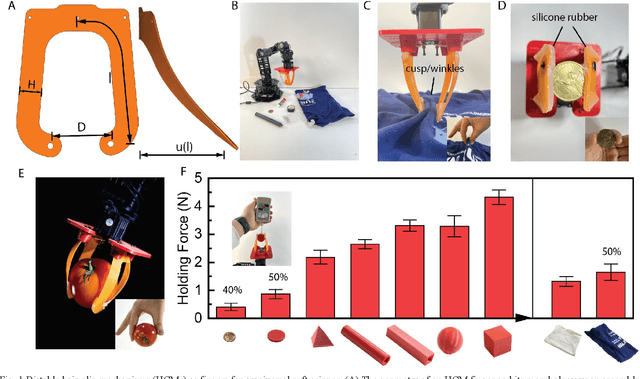
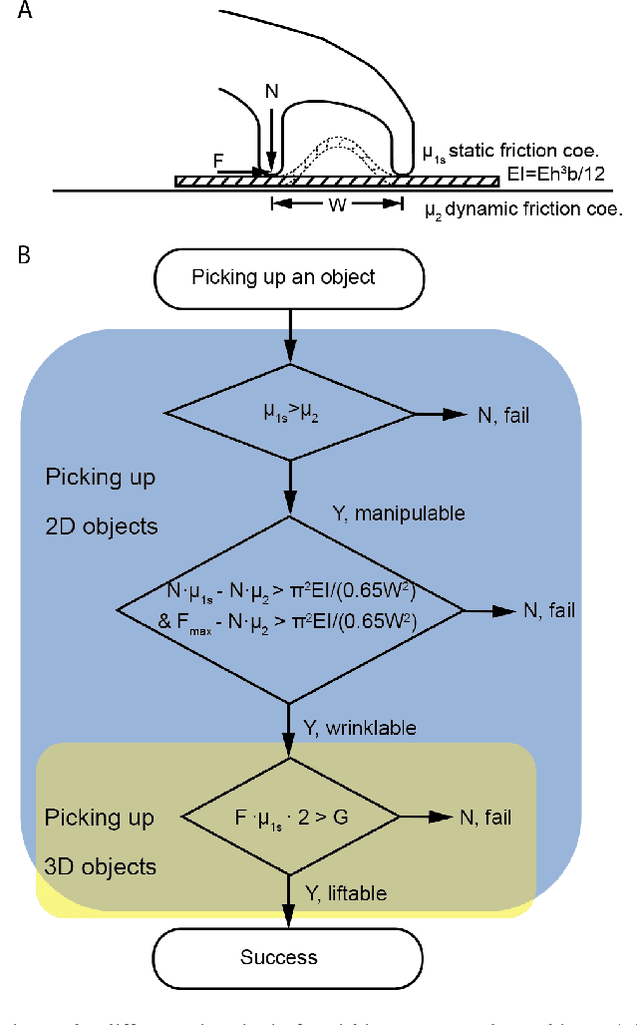
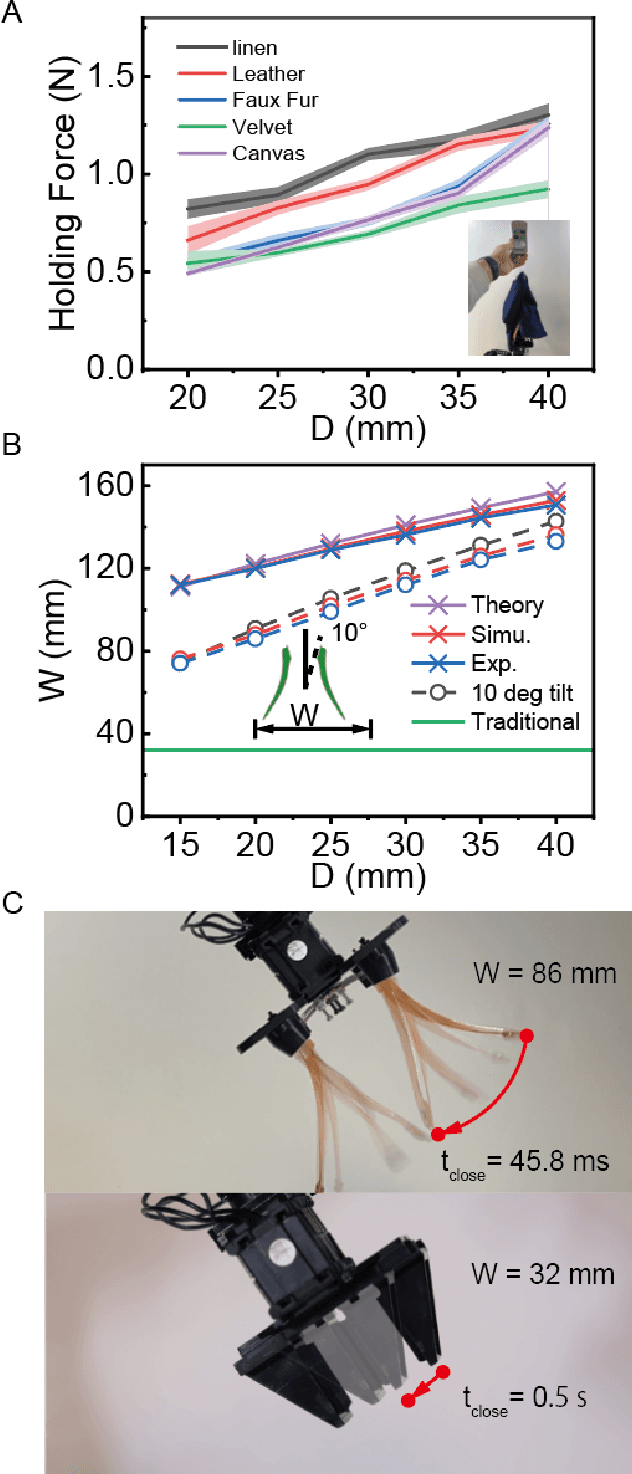
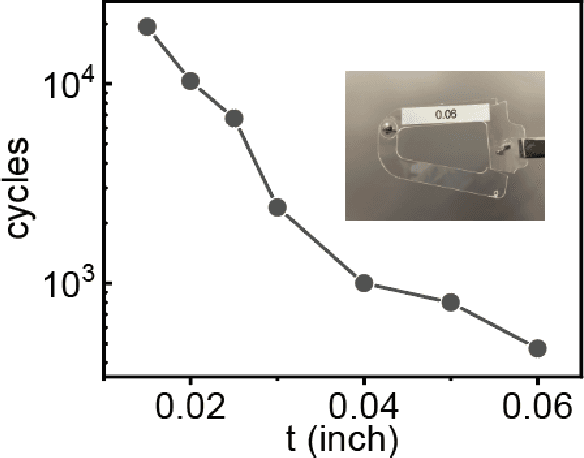
Abstract:Robot grasping is subject to an inherent tradeoff: Grippers with a large span typically take a longer time to close, and fast grippers usually cover a small span. However, many practical applications of soft grippers require the ability to close a large distance rapidly. For example, grasping cloth typically requires pressing a wide span of fabric into a graspable cusp. Here, we demonstrate a human-finger-inspired snapping gripper that exploits elastic instability to achieve reversible rapid closure over a wide span. Using prestressed semi-rigid material as the skeleton, the gripper fingers can widely open (86 ~) and rapidly close (46 ms) following a trajectory similar to that of a thumb-index finger pinching which is 2.7 times and 10.9 times better than the reference gripper in terms of span and speed, respectively. We theoretically give the design principle, simulatively verify the method, and experimentally test this gripper on a variety of rigid, flexible, and limp objects and achieve good adaptivity and mechanical performance. This research helps bridge the gap between strong industry manipulators and safe human-interactive robotic hands.
Coordination for Connected and Automated Vehicles at Non-signalized Intersections: A Value Decomposition-based Multiagent Deep Reinforcement Learning Approach
Nov 16, 2022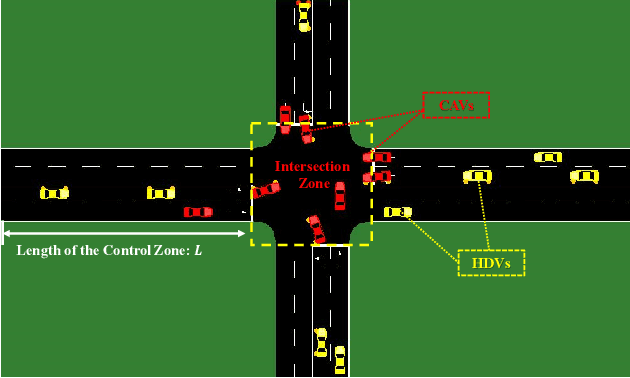
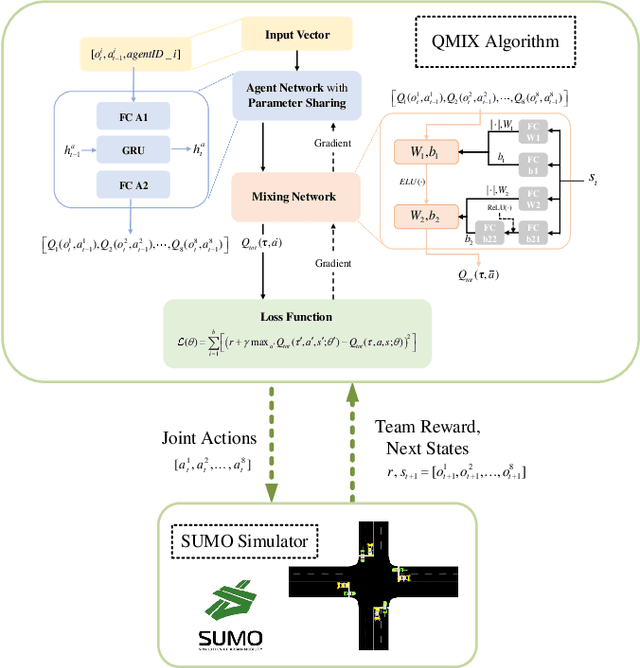
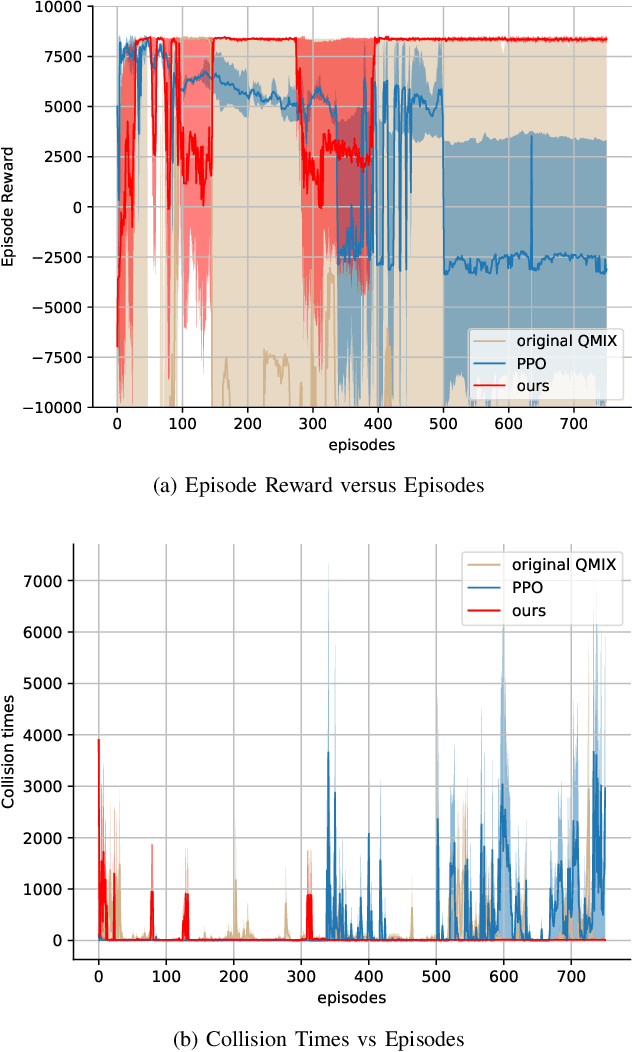
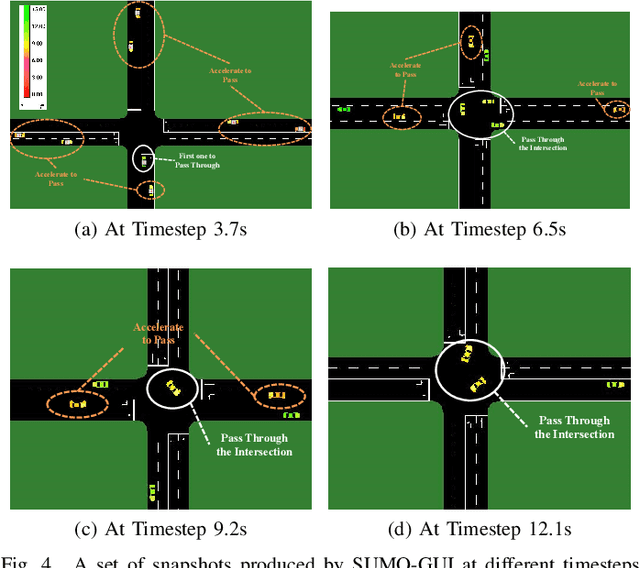
Abstract:The recent proliferation of the research on multi-agent deep reinforcement learning (MDRL) offers an encouraging way to coordinate multiple connected and automated vehicles (CAVs) to pass the intersection. In this paper, we apply a value decomposition-based MDRL approach (QMIX) to control various CAVs in mixed-autonomy traffic of different densities to efficiently and safely pass the non-signalized intersection with fairish fuel consumption. Implementation tricks including network-level improvements, Q value update by TD ($\lambda$), and reward clipping operation are added to the pure QMIX framework, which is expected to improve the convergence speed and the asymptotic performance of the original version. The efficacy of our approach is demonstrated by several evaluation metrics: average speed, the number of collisions, and average fuel consumption per episode. The experimental results show that our approach's convergence speed and asymptotic performance can exceed that of the original QMIX and the proximal policy optimization (PPO), a state-of-the-art reinforcement learning baseline applied to the non-signalized intersection. Moreover, CAVs under the lower traffic flow controlled by our method can improve their average speed without collisions and consume the least fuel. The training is additionally conducted under the doubled traffic density, where the learning reward converges. Consequently, the model with maximal reward and minimum crashes can still guarantee low fuel consumption, but slightly reduce the efficiency of vehicles and induce more collisions than the lower-traffic counterpart, implying the difficulty of generalizing RL policy to more advanced scenarios.
 Add to Chrome
Add to Chrome Add to Firefox
Add to Firefox Add to Edge
Add to Edge